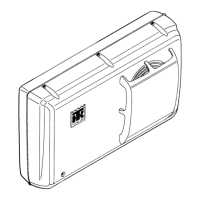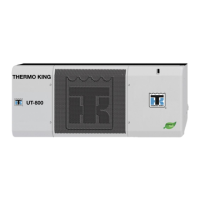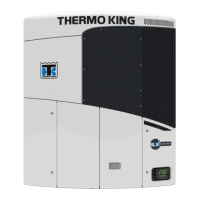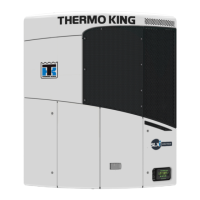Refrigeration Maintenance and Service Operations
144
6. Back seat the suction line access service
valve.
7. Stop the unit.
8. Remove the hoses from the suction and
discharge line access service valves.
9. Start the unit and perform a controller pre-trip
test to verify correct refrigerant charge and
unit operation.
Stepper Motor Valve
Replacement
The stepper motor valve is used to control the
flow of refrigerant to the compressor when the
unit is operating in the Modulation mode. As the
supply air temperature approaches setpoint, the
controller sends an electrical signal to the stepper
motor to close the valve a precise amount. This
throttles the suction gas returning to the
compressor and reduces cooling capacity.
Service of the stepper motor valve includes
replacement of the complete valve.
Replacement
1. Remove the compressor compartment bracket.
2. Recover the refrigerant charge from the unit
(see “Refrigerant Recovery” in this chapter).
3. Disconnect the unit from the three-phase
power supply.
4. Unplug the motor wire harness.
5. Unsolder the compressor side stepper motor
valve joints from the suction line. Unsolder
and remove modulation valve.
6. Clean the tubes for soldering. Position the new
valve in position in the suction line.
7. Solder both valve connections.
8. Pressurize the refrigeration system and check
for leaks (see “Refrigerant Leak Test
Procedure” in this chapter).
9. If no leaks are found, recover the refrigerant
used for the leak test (see “Refrigerant
Recovery” in this chapter).
10. Evacuate the system (see “Evacuation and
Cleanup of the Refrigeration System” in this
chapter).
11. Plug the motor wire harness into the unit wire
harness.
12. Recharge the unit with R-404A (see
“Charging the System with Refrigerant” in
this chapter).
13. Perform a controller pre-trip test to verify
system operation.
Compressor Replacement
Removal
1. Remove the compressor compartment bracket.
2. Recover the refrigerant charge from the unit
(see “Refrigerant Recovery” in this chapter).
3. Remove discharge service valve, suction
service valve, and liquid injection valve line
from the compressor.
4. Remove the compressor discharge
temperature sensor from the discharge valve
manifold.
5. Disconnect the unit from the three-phase
power supply.
6. Remove the three-phase electric power
connection from the compressor.
7. Remove the compressor mounting tray bolts
and nuts.
8. Slide the compressor from the unit.
9. Keep the compressor ports covered to prevent
dust, dirt, etc., from falling into the
compressor.
10. Drain and measure the compressor oil that
remains in the compressor.
NOTE: The compressor oil must be removed
from the compressor and measured so that the
same amount of oil can be added before placing
the new compressor or repaired compressor in
the unit.
CAUTION: Use a heat sink or wrap the
valve with wet rags to prevent damage to
the new valve.
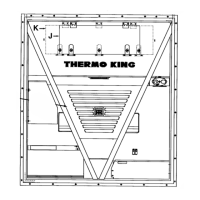
